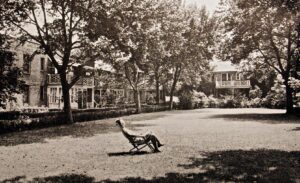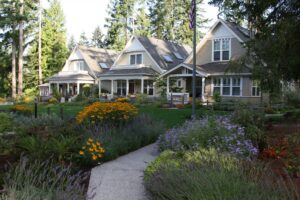Pocket Neighborhoods
Creating Small Scale Community in a Large Scale World
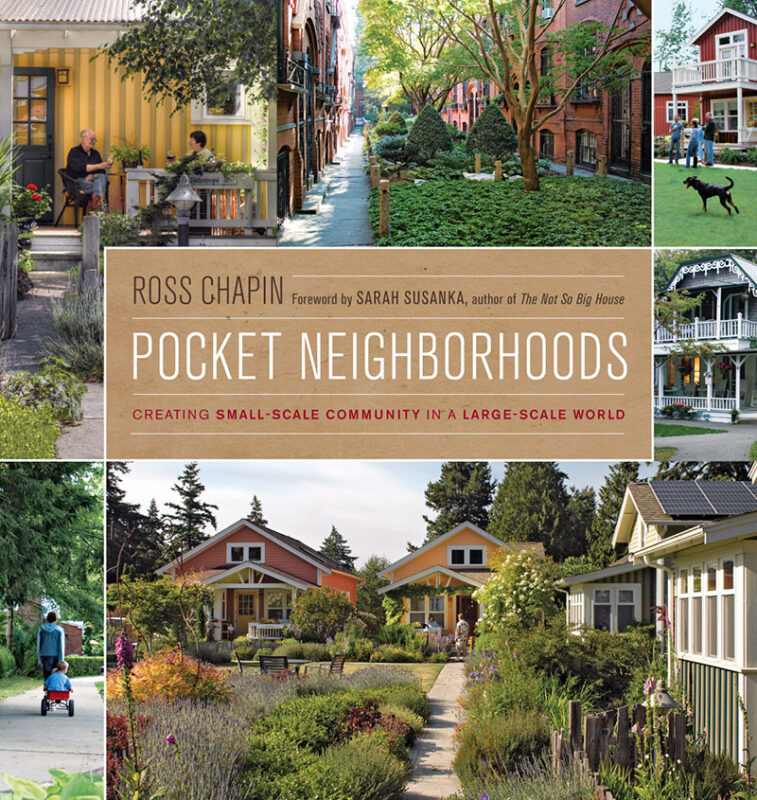
Publisher: Taunton Press
Author: Ross Chapin
Pocket Neighborhoods: Creating Small Scale Community in a Large Scale World introduces an antidote to faceless, placeless sprawl — real neighborhoods of a scale and design where people can easily know one another; where empty nesters and single householders with far-flung families can find friendship or a helping hand nearby; and where children can have shirt-tail aunties and uncles just beyond their front gate.
The book describes inspiring pocket neighborhoods through stories of the people who live there, as well as the progressive planners, innovative architects, pioneering developers, craftspeople and gardeners who helped create them.
Sarah Susanka, author of the best selling “Not So Big House” series, wrote the Forward to the book, placing pocket neighborhoods within context of the contemporary trends in housing and community.
Ross begins the book by outlining the shifts in the scale of community and the American Dream over several generations, leading to super-sized houses in a sea of development, then describes a solution to help restore healthy, livable communities.
The first section of the book looks at historic precedents of pocket neighborhoods, from 15th century hofje almshouses in the Netherlands, to a 19th century Methodists Camp Community on Martha’s Vineyard, to early 20th century Garden City models and Southern California Cottage Courtyards.
The second section covers a wide range of contemporary pocket neighborhoods, including New Urban communities, affordable housing, houseboat communities, eco-neighborhoods, and Ross Chapin Architects’ own pocket neighborhood examples.
The third section focuses on ‘cohousing’ communities, from Danish origins in the 1960s, to examples across America, Australia and New Zealand, including a chapter on senior cohousing.
The fourth section looks at retrofitting pocket neighborhoods within existing communities.
Throughout the book are series of “Design Keys” that highlight the essential principles of pocket neighborhood planning and design, and short stories about “Pocket Neighborhood Pioneers” who blazed new trails. The book is filled with rich photographs, drawings, illustrations and site plans, and a Resources section at the end provides leads for the reader to explore the topic in further detail.
Table of Contents
| Part Three: Cohousing Communities | ||
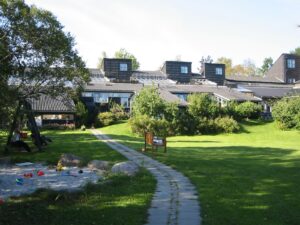 |
16: 17: 18: 19: |
Danish Origins Cohousing in America Greening the Neighborhood Saging Communities |
| Part Four: Pocket Neighborhoods in Existing Communities | ||
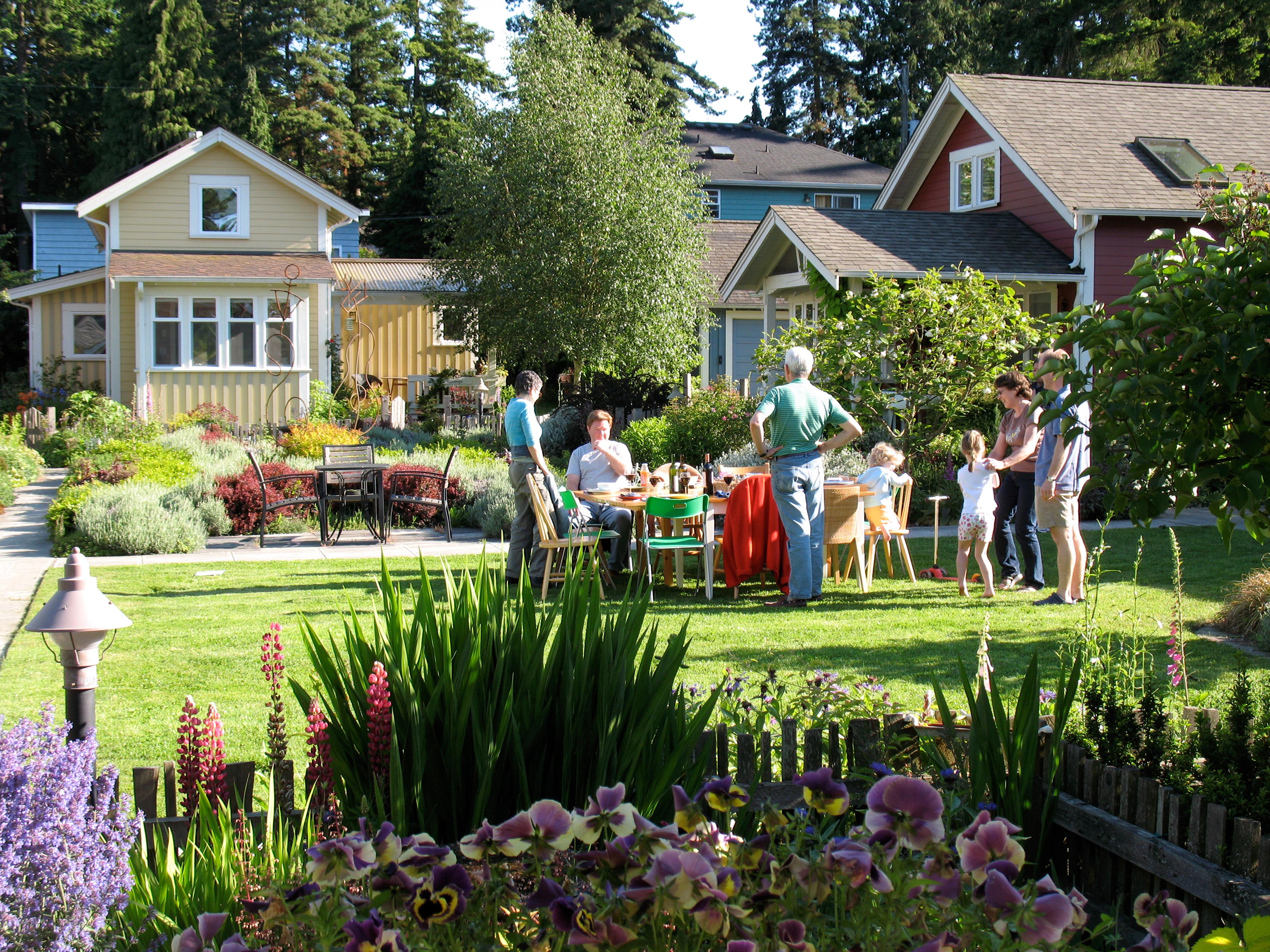 |
20: 21: 22: 23: 24: 25: |
Infill in a First-Ring Suburb Urban Homesteads Cultivating Community in a Garden Taking Down the Fences Taking Back the Alley Taking Back the Street |
Afterword: The Fabric of Community Resources Credits Index |
||
Selected Pages
Sample pages from the Pocket Neighborhoods book
Book Reviews
 |
Customer Reviews Amazon.com It is not an overstatement to say this idea could revolutionize our country. (Don’t roll your eyes.) This movement has the potential to create stronger families, greater support circles for our youth, alternative housing options for the elderly, more affordable living, lower healthcare costs, and a healthier environment. Amazon |
 |
Good Developments Come in Small Packages New Urban Network … (Ross Chapin) understands — and explains with great clarity — (pocket neighborhoods’) place in the social, historical, and metropolitan scheme of things. He possesses a Christopher Alexander-like ability to show how all the pieces of a house and a neighborhood can fit together, composing a profoundly satisfying environment. |
 |
Spring Reading Residential Architect Magazine Architect Ross Chapin’s Pocket Neighborhoods: Creating Small-Scale Community in a Large-Scale World (The Taunton Press, $30) offers a charming and inspiring antidote to sprawl in the form of small-scale, infill neighborhoods that foster a sense of community. |
 |
Guide Review About.com The Bottom Line: Pocket Neighborhoods: Creating Small-Scale Community in a Large-Scale World is a book recommended for anyone interested in creating a better way of living through improved community ties. |
 |
The Latest Small-Scale Community Trend CBS MoneyWatch.com In his new book, Pocket Neighborhoods: Creating Small-Scale Community in a Large-Scale World, architect and author Ross Chapin discusses the real estate trend of small community development. |
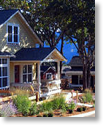 |
The Perfect Place to Live Innovation Circle Network | Europe Imagine you live in small community where kids can play beyond the front gate, your neighbor would feed your cat while you are on vacation and you help the older man next door cutting a hedge. That is what Ross Chapin calls a Pocket Neighborhood. |
 |
Pocket Neighborhoods — Book Review Tiny House Blog I recently received Ross Chapin’s new book called Pocket Neighborhoods to review and share with you. This is a beautiful coffee table style hard bound book written by Ross Chapin. Ross Chapin is an architect and long-time advocate for sensibly sized houses and vibrant neighborhoods. |
 |
ARCHITECTURAL REVIEW: Pocket Neighborhoods by Ross Chapin Thirty Creative Studio The book starts with a charismatic forward by Sarah Susanka in which she expresses her hopes for a new revival of small community neighborhoods; or should I say, a more generalized use. She opens the doors to the discussion between neighborhoods designed with the automobile in mind versus those organized with the individuals in mind. |
| Small Clusters of Homes Make the Best Communities Planetizen Jay Walljasper reviews Pocket Neighborhoods: Creating a Small-Scale Community in a Large-Scale World by architect Ross Chapin. Chapin says that small cluster of living units or houses that share a common area are the best breeding grounds for neighborliness. |
|
| Pocket Neighborhoods, A Small-Scale Community Real Estate Trend Realtyjoin.com A new book, Pocket Neighborhoods: Creating Small-Scale Community in a Large-Scale World by Ross Chapin with Foreword by Sarah Susanka , discusses the real estate trend of small community development. This inventive and increasingly popular paradigm for local living seeks to fill the void left by global expansion. |
|
Endorsements
Every few years a book comes along that profoundly shifts the way we think about a subject, and when we look back a decade or so after its publication, we see a dramatic shift brought about by the thoughts that book contains. I believe that this book is such a game changer.
—SARAH SUSANKA, author of The Not So Big House
Ross Chapin possesses a Christopher Alexander-like ability to show how all the pieces of a house and a neighborhood can fit together, composing a profoundly satisfying environment.
—PHILIP LANGDON, author, A Better Place to Live: Reshaping the American Suburb, and editor of New Urban News
This revolutionary book will change the way North Americans view new home developments and will help home buyers realize that community is often as important as the house.
—TORONTO STAR
Pocket Neighborhoods includes an extensive list of resources and organizations related to urban design and eco-friendly neighborhoods, but this is not a how-to book. It is information and inspiration, a timely discussion as regions grapple with housing density and look for ways to build a sense of community along with every new house, apartment and condo.
—LOS ANGELES TIMES
Superb and sublime — Ross Chapin has described the future of neighborhood-making with his book, Pocket Neighborhoods.
—CHARLES DURRETT, architect, author of Cohousing: A Contemporary Approach to Housing Ourselves
Pocket neighborhoods are essential to healthy and sustainable community design. Ross Chapin’s Pocket Neighborhoods book beautifully illustrates historic and new case study designs at a personal and intimate scale that resonates universally. It is an essential primer for everyone passionate about place-based design and living.
—TOM LOW, Director, DPZ Charlotte Architects and Town Planners
Ross Chapin and his development partners in the Pacific Northwest set the standards for beautifully designed and beautifully crafted cottage neighborhoods. Now comes Ross’s long-awaited book explaining why and how these neighborhoods work. It’s a manual for right-sizing community in America’s 21st century.
—BEN BROWN, Principal, Placemakers
Ross Chapin’s book, Pocket Neighborhoods, skillfully illustrates numerous success stories showing how to transform individual homes and gardens into a community. As homes get smaller, connection to the public realm has never been more important. This book is a great read for anyone looking for housing solutions that will stand the test of time.
—MARIANNE CUSATO, designer, Katrina Cottages & The New Economy Home
Ross Chapin is a master in understanding the importance of ‘scale’ in creating beautiful and humane communities. His new book is a profound manual of what works to create vibrant pocket communities—essential components of a sustainable future.
—JASON F. MCLENNAN, CEO Cascadia Green Building Council
Pocket Neighborhood is a new term and way of thinking about something we have long known: that even in big cities, most of us seek out a community of people small enough and close enough that we can get to know and loodk after each other. In his new book, Pocket Neighborhoods, Ross Chapin makes a compelling case for why we need small-scale communities of connection.
—THOMAS FISHER, Dean, School of Architecture, University of Minnesota
My own instinct is that Ross’s work is just what our culture is hungering for right now—a viable way to make life vivid, personal and deeply satisfying, and a sustainable alternative to spread-out suburban sprawl.
—ROBERT WALSH, architect, educator
Building a neighborhood is about having a vision and understanding how all the pieces and layers fit together. Skipping over a key detail or two is the difference between a subdivision and a neighborhood. Ross Chapin understands these details and his Pocket Neighborhoods book will give you that understanding too.
—CASEY LAND, developer
After 30 years as a building developer, I met Ross Chapin. His articulate guidance about how we live together permanently changed how I create places for people to live. With Pocket Neighborhoods, Ross shares his wisdom of how truly wonderful neighborhoods can and should be. This book has come none too soon for every one of us. —MICHAEL MCKEEL, developer
Excerpts from the Book
For most of human history, the scale of community was confined to distances defined by walking. That changed with the automobile, national highway system, telephones, jet travel and now, online social networking. These technologies brought benefits, but the extended communities they created left many people isolated as well. Pocket neighborhoods can re-establish communities where nearby neighbors can respond to daily needs in a way that friends across town and family across the country cannot — mending webs of belonging, care and support needed in a frayed world.
Lets face it: humans are gregarious—we like to live around others. We also have a desire—and perhaps a need—for personal space. Sometime in the last generation, however, we became so charmed with the dream of a ‘house of one’s own’ that we overshot our desire for privacy, leaving us marooned on our own personal island in a sea of houses.
The front porch is an essential facet of a pocket neighborhood. Its magic comes from the way it is both private and public, belonging to the household while being open to passersby. Sometimes it’s just the right spot to read a book or take an afternoon nap. At other times the porch’s somewhat-public nature is perfect for a chat with passing neighbors — welcoming, without having to invite them inside.
A mom needs help looking after her kids while going for a short errand. The next-door family needs a cat fed while away on vacation. An elderly neighbor may need assistance trimming a hedge. In a pocket neighborhood, nearby neighbors are on a first-name basis with each other, the first to notice a need, and the to first call for assistance.
Impromptu encounters among nearby neighbors have them chatting about the garden, the latest news, or reminiscing about old times. These simple meetings may eventually grow into caring relationships, offering friendship as well as support at a challenging time.
Simultaneously, a picture began formulating in my mind that was like the Russian nesting dolls: individual houses have their own private yards, nested within pocket neighborhoods of homes on a block or alley, all within a larger sub-neighborhood bordered by busy city streets and a park. This community is then nested within a district within the city. It was a picture of a whole and healthy small-scale community within a large scale world—not just an idea, but the real thing.
- Book Overview
- Table of Contents
- Selected Pages
- Book Reviews
- Endorsements
- Excerpts from the Book
| GOOD WORDS |
—SARAH SUSANKA, author of The Not So Big House
—BEN BROWN, former senior editor, USA Today
—LOS ANGELES TIMES
—TORONTO STAR
—MARIANNE CUSATO, Katrina Cottages
—JASON F. MCLENNAN, Cascadia Green Building Council
